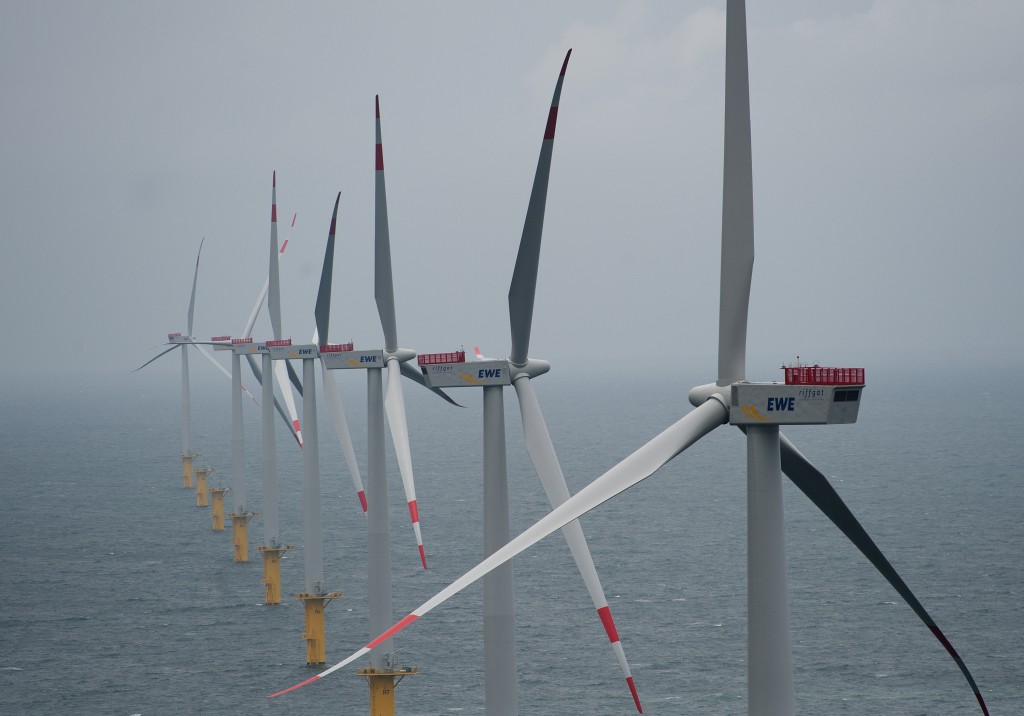“Steel in the water” – so far, it’s been but a dream for U.S. offshore wind power, but developers of a project off Rhode Island are doubling down on their claim to be on course to make it happen. Soon.
Deepwater Wind is embarked on a plan – hatched in 2008 – to build a 30-megawatt wind farm three miles off Block Island in Rhode Island waters, and state officials last week signed off on permits related to water quality, the installation of a transmission cable and onshore construction activities. In a statement, chief executive Jeffrey Grybowski called the permitting a “major step forward for” the five-turbine array.
“Momentum for the project is strong and we are moving closer to having ‘steel in the water,’” Grybowski said, reiterating his belief that power will be coming ashore at Narragansett in 2016.
It does bear noting that in 2012, Deepwater had forecast that the Block Island turbines would be spinning in 2014. So stuff happens. But the company seems to be facing none of the well-financed challenges that have plagued Cape Wind project up the coast in Massachusetts, long expected to become the first U.S. offshore wind farm.
Cape Wind’s developers have been slogging away since 2001 and only now appear close to beginning construction of the 486-MW project. They’re eyeing commissioning in 2016, as well.
Meanwhile, three other offshore projects suddenly appear viable – not in 2016, but perhaps by 2017. That’s the U.S. Department of Energy’s goal with the grants of up to $47 million apiece that it awarded last week to projects in New Jersey, Virginia and Oregon.
The three all use novel technologies that the DOE hopes could lead to cheaper offshore wind. As it is, the stuff is expensive, at least on its face: National Grid has agreed to long-term contracts to buy the Block Island power at 24.4 cents per kilowatt-hour, and a portion of Cape Wind’s power output at 18.7 cents/kWh. In both cases, the price will rise 3.5 percent annually, as well.
Deepwater will develop one of those DOE-backed projects, the 30-MW Oregon array that will use Principle Power’s floating platform technology.
“Deepwater Wind’s Block Island Wind Farm is jumpstarting the East Coast offshore wind industry – where water depths are suitable for fixed foundations – the WindFloat Pacific project will similarly act as a catalyst for large-scale floating offshore wind farms in the deep waters of the Pacific Ocean that are unsuitable for fixed foundations,” the company said.
To get their full $47 million from the DOE – less than a quarter of the funding it will take to build the Oregon project – Deepwater and Principle Power will need to have a power purchaser and all their permitting in place within a year.
Meanwhile, Deepwater isn’t quite through the regulatory thickets in Rhode Island. According to the company, it still needs “assent from the Rhode Island Coastal Resources Management Council, as well as approvals from the U.S. Department of the Interior’s Bureau of Ocean Energy Management and the U.S. Army Corps of Engineers,” but it anticipates having those permits in place in the next month or so.
The Block Island Wind Farm is a stepping stone of sorts for Deepwater, which last summer won the first competitive lease sale for renewable energy in U.S. waters, consisting of two parcels off Massachusetts and Rhode Island, and plans to install up to 200 turbines there that could put out a gigawatt of power. The hope is to begin construction in 2017 and be in operation perhaps as early as the following year.


